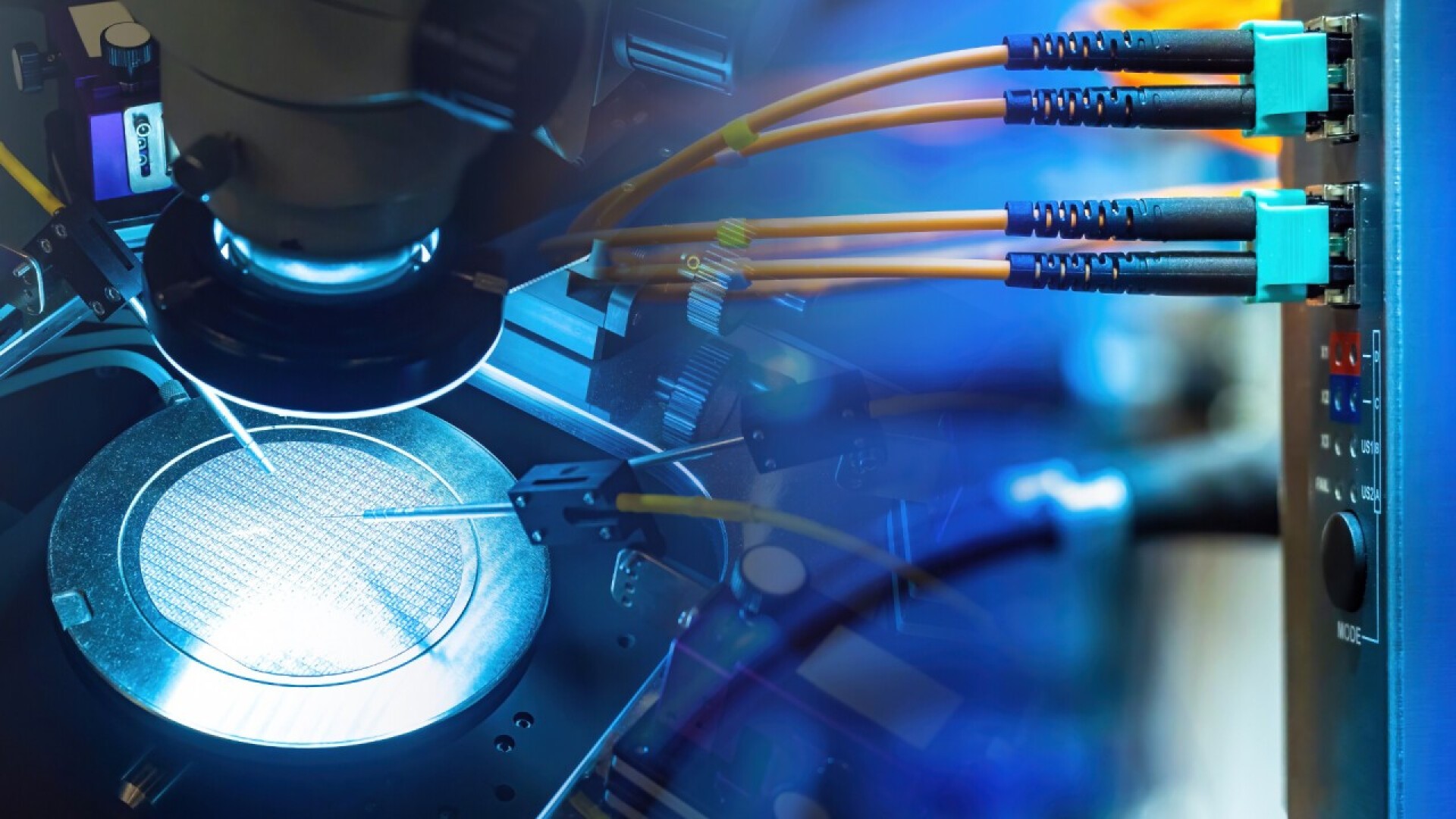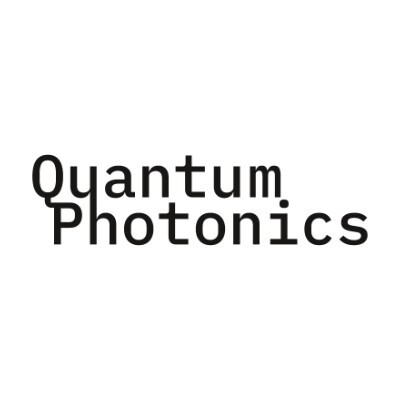Integrated photonics: The future of optical technology
Integrated photonics is changing communication, sensor technology and data processing by combining optical functions on a single chip. The technology offers compact, energy-efficient solutions with high bandwidth - a key to 6G, quantum computing and autonomous systems.
Integrated photonics is rapidly developing into a key technology for next-generation information processing, communication and sensor technology. It enables the miniaturization, scalability and increased efficiency of photonic systems by combining optical functions on a single chip - similar to microelectronics.
What is integrated photonics?
Integrated photonics is the integration of various optical components - such as waveguides, modulators, photodetectors and laser sources - on a common substrate. The aim is to efficiently generate, control and detect light signals without having to rely on external, bulky components.
This technology is based on the principles of light propagation, interference and modulation. In photonic circuits, light waves take on the role of electrical signals, with information being transmitted using optical frequencies. This results in considerable advantages in terms of speed, energy consumption and bandwidth.
Advantages of integrated photonics
The advantages of this technology are manifold:
- Compactness: components that used to be several centimetres in size now fit into just a few square millimetres.
- Energy efficiency: Light requires less energy to transmit information than electrical signals.
- High data rates: Transmission speeds in the range of terabits per second are feasible.
- Insensitivity to EMC: In contrast to electrical cables, light is insensitive to electromagnetic interference.
- Massive parallelization: Several channels can be processed simultaneously on the same chip.
These features make integrated photonics particularly attractive for data centers, high-speed networks and future applications such as quantum computers.
Important materials and production techniques
A central element of integrated photonics is the material on which the photonic structures are built. The following materials are used most frequently:
- Silicon: Particularly common in silicon photonics. It is CMOS-compatible, cost-effective and suitable for many applications in the infrared range.
- Indium phosphide (InP): Ideal for active optical components such as lasers or amplifiers.
- Silicon nitride (SiN): Excellent for applications in the visible and near-infrared spectral range, with particularly low losses.
The manufacturing technologies are based on the methods used in the semiconductor industry - including photolithography, etching, deposition and doping. This enables the production of complex photonic systems with high precision and in large quantities.
Fields of application of integrated photonics
The possible applications of integrated photonics are wide-ranging and are rapidly gaining in importance in a wide variety of technology areas. From the backbone of digital communications to high-precision medical diagnostics, integrated photonics is a key driver of innovation.
Telecommunications and data transmission
In fiber optic networks, integrated photonics enables the use of extremely compact and powerful optical transceivers that convert electrical signals into optical signals with maximum efficiency and feed them back again. Existing infrastructures are becoming increasingly overloaded, especially in view of the exponential growth in data volumes triggered by streaming, cloud computing and networked industrial processes. Integrated photonics can help here, as it not only significantly increases transmission speeds but also minimizes energy consumption. This technology is proving to be indispensable, particularly with regard to future 6G communication networks, where high bandwidths must be combined with low latency. Wavelength-division multiplexing processes implemented on the chip and fast optical modulation techniques form the backbone of the next generation of communication systems.
Data centers and high-performance computers
In modern data centers, not only are the demands on computing power increasing, but above all on the efficiency of data connections between memory and processor units. Traditional electrical connections are increasingly reaching their physical limits, particularly in terms of heat generation, losses and frequency restrictions. Integrated photonics offers an alternative with significantly higher data throughput and lower energy consumption. Photonic interconnects enable fast, low-loss data transmission even over shorter distances within servers or on printed circuit boards. In the field of high-performance computers - such as exascale systems - work is also being carried out on photonic-electronic hybrid architectures in which optical connections are integrated directly into the processor package. These co-packaged optics are considered a key technology for the next generation of energy-efficient supercomputers.

Sensors and medical technology
In sensor technology, integrated photonics opens up new possibilities for high-precision, miniaturized and robust measuring systems. Photonic chips are used in biomedical diagnostics in particular, as they are able to detect molecular bonds, analyze DNA sequences or observe cell changes in real time. Lab-on-a-chip systems also benefit from integrated optical components that can analyze complex biochemical processes in the smallest of spaces. The technology is also used in environmental monitoring, for example to detect pollutants, gases or particles in air and water. In industrial production, integrated photonics ensures precise optical sensors that are used in quality control, distance and position measurements or in automated processes, among other things. The combination of real-time capability, high sensitivity and miniaturization makes photonics a superior solution to conventional technologies in sensor technology.
Quantum communication and quantum computing
The ability to precisely generate, manipulate and detect individual photons makes integrated photonics an indispensable building block of quantum communication and quantum computing. In photonic quantum chips, quantum mechanical states can be generated in a controlled manner and used for calculations. This is essential for scalable quantum processors, where classical approaches reach their limits. In quantum communication, on the other hand, integrated photonics enables secure data transmission methods such as quantum key distribution (QKD), in which cryptographic keys are generated on the basis of quantum mechanical principles. The technology is also used in quantum sensor technology, for example in the high-precision measurement of magnetic fields, gravity or time. The high integration density and on-chip control offer decisive advantages over conventional systems in terms of scalability and stability.
Lidar and autonomous systems
Integrated photonics is playing a growing role in the field of autonomous mobility and robotics - especially in the development of modern lidar systems. These systems, which are based on the time-of-flight measurement of light pulses, are used for three-dimensional detection of the environment. However, conventional lidar technologies are often large, expensive and mechanically fragile. Integrated photonic lidar solutions, on the other hand, do not require any moving parts, are more cost-efficient and still enable high-resolution real-time detection. This makes them ideal for use in autonomous vehicles, drones, logistics robots or safety-critical applications. Miniaturization through photonics also facilitates integration into existing systems and opens up new fields of application in which space, weight or energy consumption are critical factors.

Defense, aerospace and high-frequency technology
Integrated photonics also shows its potential in specialized application areas such as defence technology, aerospace and high-frequency technology. In high-frequency signal processing, it enables the low-loss generation, modulation and filtering of electromagnetic signals in the gigahertz and even terahertz range - with significantly higher precision than electronic systems. Optical radar systems based on photonics improve target detection, increase range and accuracy and offer new tactical possibilities. Finally, in satellite communication, photonic systems score points with their low weight, high reliability and ability to transmit signals more efficiently - a decisive advantage given the limited space and resources in space. Overall, it is clear that integrated photonics is a pioneering technology not only for commercial applications, but also for strategic and security-relevant areas of use.
Challenges and outlook
Despite the rapid progress, there are still some challenges ahead:
- Standardization: there is a lack of uniform design and manufacturing standards for photonic chips.
- Integration of active components: The production of efficient laser sources directly on silicon has not yet been fully resolved.
- Design complexity: Photonic systems are more demanding in terms of simulation and fault diagnosis than electronic circuits.
Nevertheless, the outlook is promising. With the increasing maturity of the technology, advances in packaging and growing support from industry and politics, integrated photonics will play a central role in the digital transformation in the coming years.

Conclusion
Integrated photonics is far more than just a research topic - it is the key to faster, more energy-efficient and more compact systems in communication, data processing and sensor technology. Its applications range from data centers to medical technology and are currently revolutionizing entire industries. Anyone who gets to grips with this technology at an early stage - for example by visiting Quantum Photonics in Erfurt - will gain a clear competitive advantage.


